Macrame: what is it, types of knots and weaving patterns
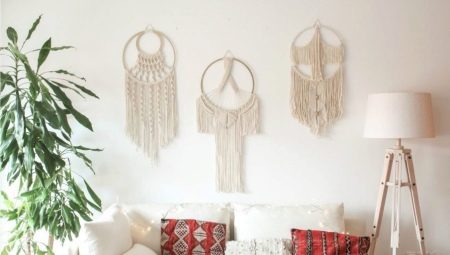
It is not for nothing that fashion, including interior design, is compared to a chest where things have been folded for years: when it is stuffed to the top, it just needs to be turned over, and what was from the bottom can be put on right now. Fashion really goes in circles. And if you look closely at the interiors of the 60s, you will see how the outlines of that furniture are guessed in the atmosphere of modern salons.
With the decor, everything is exactly the same: the once popular art of weaving macrame is gaining its former glory. And those who are a fan of the boho style, Scandinavian and not only, want to get themselves a beautiful panel of fancifully woven knots.
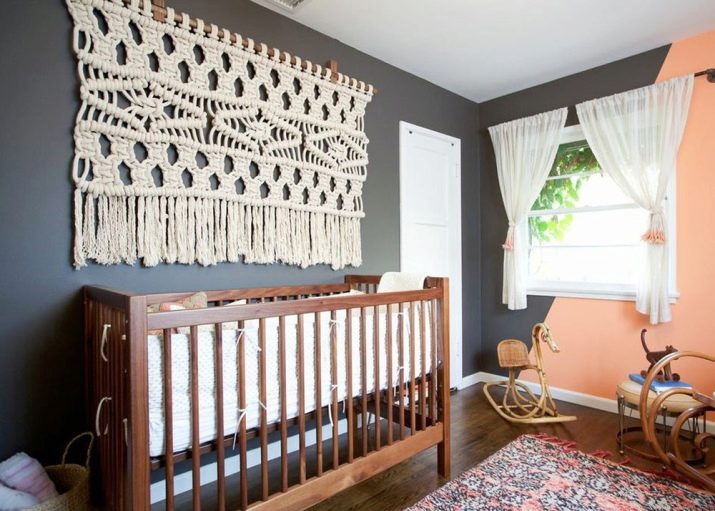
What it is?
The word "macrame" has Arabic roots, it can be translated as fringe, braid or lace. To put it simply, then macrame is a knotted weave. The creation of panels, decorative items in this technique involves the use of different materials: different thicknesses and structures of threads with the use of additional plastic, metal, wooden parts.
Previously, there were no synthetics, so only natural materials were taken for macrame, the most popular of which was flax. To this day, lace is woven mainly in light shades, natural, natural. All materials for future work must be strong, curl well and not tear when weaving.
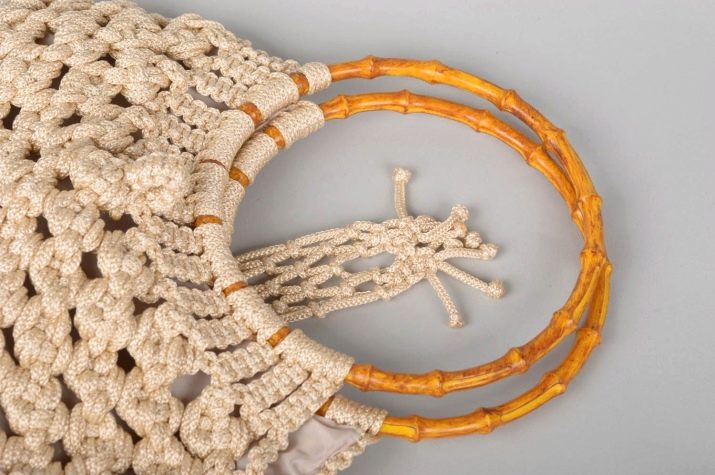
To make the pattern clear in the work, the threads should be twisted tightly.
In addition to threads, a needle, a ruler, clamps, a spindle, as well as a hook, pads can be useful. You may need glue as well. If you are just starting out, you only need strong thread, not the thinnest twig and scissors. Subsequently, the list of instruments will expand.
But the macrame is wonderful because even simple works in this technique, which younger students can do, turn out to be self-sufficient, convincing in their simple but elegant aesthetics... And most importantly, they are in tune with the time, which is increasingly displacing plastic and complex decor from the home, replacing it with manual creativity.


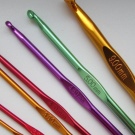
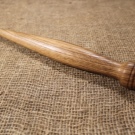
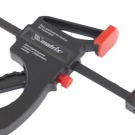
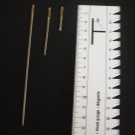
History of origin
Probably, it would be correct to say that it began from the time when a person first made a knot. The fundamental stage in the development of macrame is the time when a person actively plowed the sea on an already serious structure of ships. It is to the sailors of the sailing fleet that we owe the appearance of this weaving technique: sailors, according to their duty, had to be able to weave different types of sea knots (of which there were about 4 thousand). In their free time from their main activity, sailors braided bottles, flasks, knife handles.
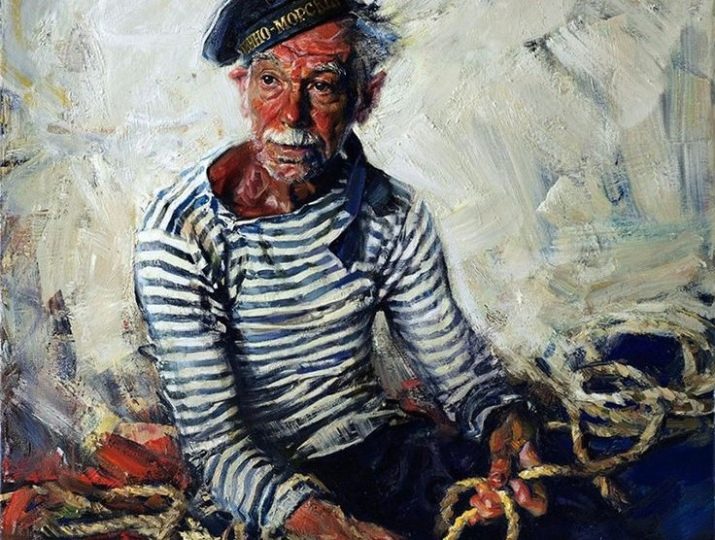
These crafts gave birth to the art that needlewomen all over the world adore today.
The macrame technique, one might say, was invented by men, and today more and more representatives of the stronger sex continue the work of enterprising sailors. And it is not in vain that there are so many references to the people of this profession: until now, the very sea weaves are used at the basis of the knots used in macrame.
But to say that no one other than the "sea wolves" was fond of openwork knot weaving is also impossible. As soon as man began to make nets for fish and poultry, he predetermined the appearance of macrame. Therefore, this type of manual creativity is one of the most ancient, natural, democratic. You don't need to graduate from art school to master macrame. There is no right age to be carried away by him. People of different nationalities, age, gender, wealth can be successful in this business.
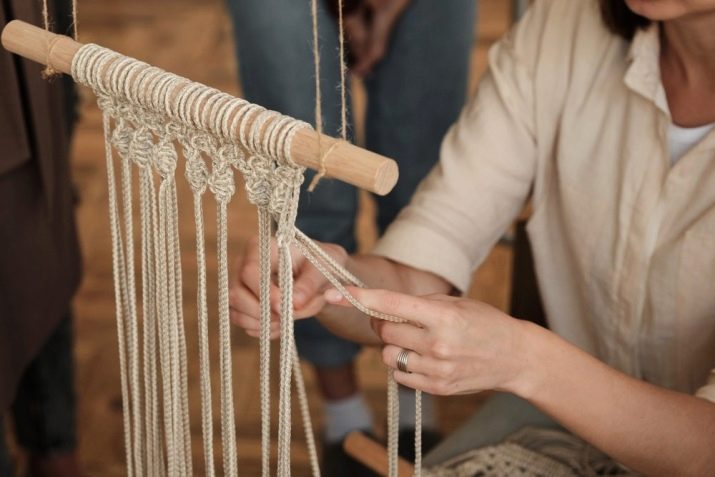
Main nodes
Macrame is based on a Herculean knot. This is the first thing newbies learn. Work always begins with him.
- Take a pair of strong threads of 10 cm, turn them vertically, fixing the upper ends with a pin.
- Bring the thread on the right under the left - something that looks like a loop will come out. Pull the left thread into it. Tighten this knot.
- Next, fasten 2 more threads nearby, in total we already have 4.
- A horizontal thread is needed for fastening. Then comes the base - the second and third threads. They tighten the knots.

The types of knots are varied. Necessarily in weaving there is a place for a flat knot. The right working thread is wound under the warp and the left thread. It is already stretching through the formed loop. If you make two more such knots, you will see that they unfold slightly to the left, but this is normal. Then make four more knots, the left-side chain will come out.
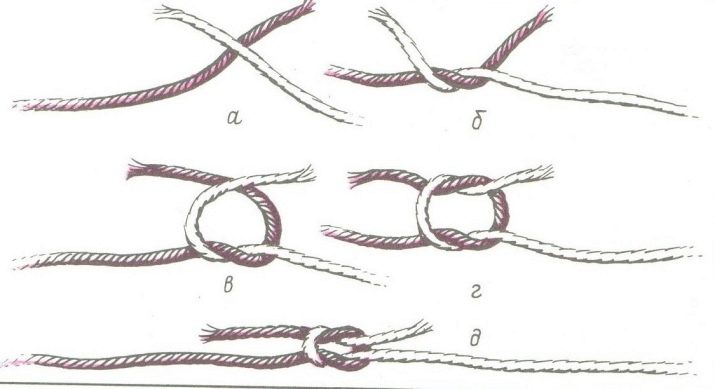
There is also a square flat knot. On the base, you need to place two threads, create the first flat knot, after weaving is complete, make a double-sided lock. The square knot does a good job of creating interesting patterns: two threads are fixed on the base, the first and second flat knots alternate, when alternating flat knots, you get a square.
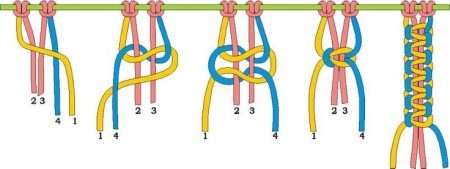
And this is just the beginning of the study of weaving - the further, the more interesting.
Tools and materials
The first and most important thing in macrame is threads. The thicker they are, the more you need to work.
What are the threads.
- Reinforced... These are fine cotton threads that are often needed for winds that require regular washing. Such threads are usually used by experienced macrame masters.
- Perle... Their big plus is a wide range of colors, they are sold in 9-gram skeins. This thread is excellently unwound into thinner strings and goes well with floss.
- Lurex. This is the name given to silvery and golden threads. Interesting bracelets, key rings, various jewelry of this kind are made from lurex. You can make products with beads, weaving of beads, etc. It is too early for beginners to work with them, but later on, lurex can come in handy.
- Yarn. An optimal and inexpensive choice for beginners, such threads are presented in a wide range, sold in any department store. Usually bought by craftsmen of the thread that is used to crochet lace.
- Cords... They mean everything that may initially serve not at all for the purpose of creativity, but is also well suited for needlework - from twine, from jute rope you can make beautiful panels, to which even chic knitted yarn will give way in appearance.

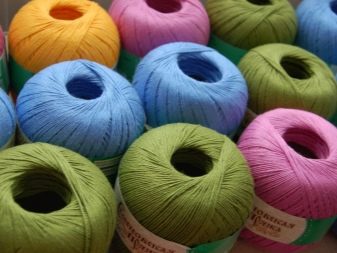
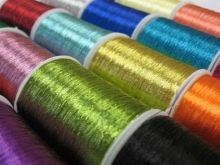

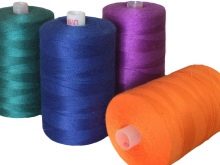
You will also need a hard base pillow for work, which is a must for beginners. Previously, sawdust or sand was placed inside it. Today, the pad can be replaced by a foam sheet, threads are fixed to it with simple pins. You can purchase compact styrofoam sheets at any hardware store.
The base is easy to make yourself: attach a simple knitting needle to the foam with paper clips (binders).
There is an even easier way: you need to take a stationery tablet with a clip. And to make the strings easier to attach, place a small paper stack under them. In order to secure the individual components, you need pins: long, durable (great if they are with plastic heads).

The macrame kit should contain scissors, a ruler, possibly crochet hooks. If you are making a panel, collect some beautiful twigs - you can simply dry and cut them, or you can paint them in the color you are interested in.
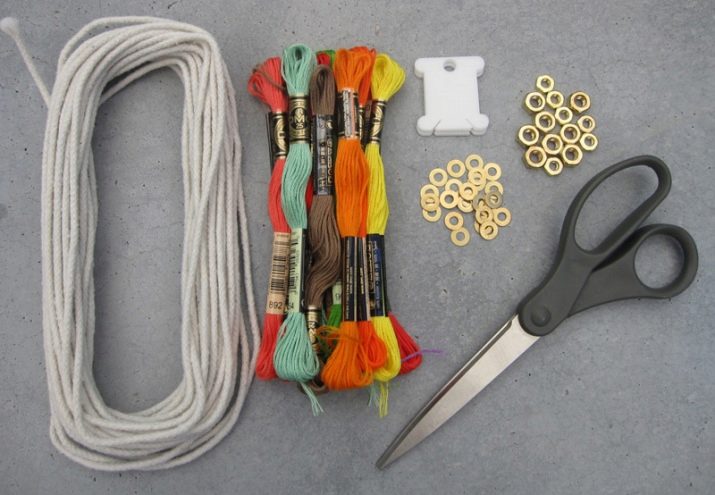
Weaving patterns
When all the materials are ready, and you are filled with determination to begin work on the study of macrame, cut off the required number of threads. The length is calculated as follows: it should be approximately 6 times longer than the expected height of the work. Be sure to singe the ends of the thread with a soldering iron or just a lighter.
If your yarn is natural, the ends can be treated with PVA glue.
If you are just starting out and even during your school years knitting (including baubles) bypassed you, do not immediately try to make a meter-long panel on the wall with your own hands. Start with small jobs that will get your hand into weaving knots: bracelets, earrings are a good start. Your first product made in the evening using the basics of macrame technology is a shamballa bracelet.
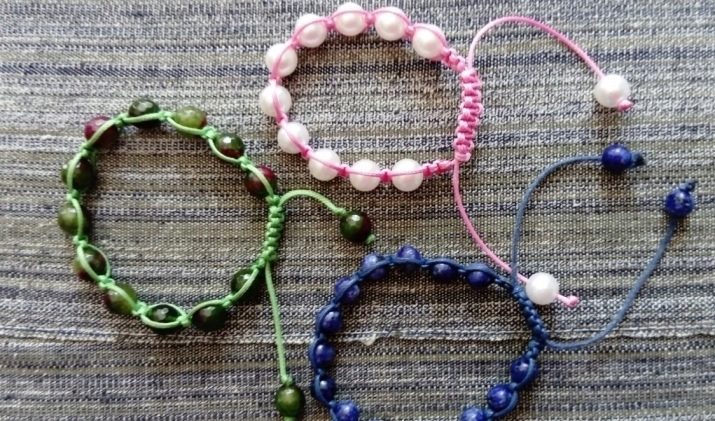
Bracelet making technique.
- We cut off two segments from the thread skein - 40 and 80 cm. What exactly the length of the working thread will be depends on the girth of the wrist. A short cut is a warp, a long one is a working thread. Tie them together with a simple knot.
- Drag the right tip in front of the base, then drag over the left tip.
- Lead the left tip of the working thread over the working part under the right one. Go straight into the loop, tighten. Repeat the maneuver only starting from the left.
- As soon as 3-7 knots are knitted, you need to string a beautiful bead on the main thread. And in this way, reach the end of the weaving.
- A strong carabiner is a good lock. But if you are already making a real Shambhala bracelet, you need a strictly thread lock. Tie a new thread cut (40 cm) to the end of the working thread with a simple knot and weave it according to the "mantra" method: right under / up, left under / up. But do not tighten too tightly: the bracelet should not be tied tightly.
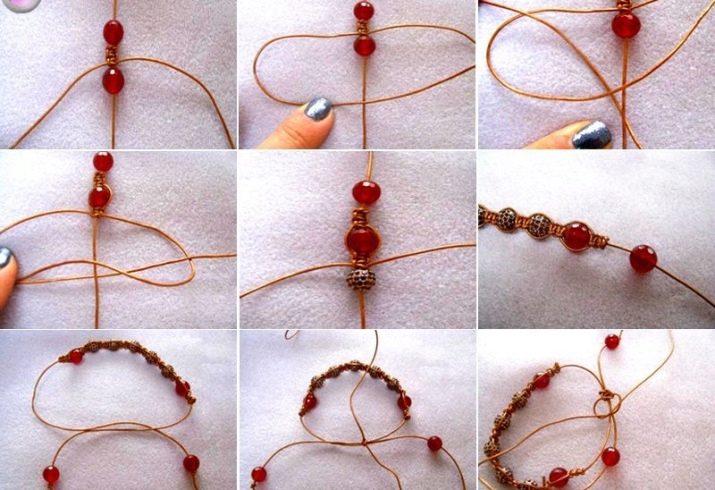
Next, you need to practice using the picture diagrams. You print them, fix them on a dense base (this, of course, is not necessary, but it is convenient to work with) and work out all the patterns, techniques, pigtails separately. But don't untwist it right away: save these patterns. This is exactly how the hand is stuffed.
And when the whole theory has been worked out in practice, you can start doing serious work that will decorate your home.
Where is it used?
Those who say that macrame is a hobby of grandmothers and in general the last century are simply exposing their ignorance. Nothing like this! The best designers use macrame products to make their interiors look impeccable. Items made using the knotted technique can become the main decoration of the house.
If your home gravitates towards ethnicity, then macrame is the simplest in terms of decor that you can use to decorate it.
Finally, boho is one of the kings of the interior today, it is almost impossible to imagine without macrame.

Let's take a look at examples.
- In the boho interior macrame can take leading positions. Boho is several directions at once with common roots. Boho classic - an abundance of velvet, corduroy, rustic wool, lace. Boho glamor is guipure, chiffon in many layers, bows, furs, flowers. Boko-eco is all natural with sophistication, environmental friendliness, many details. But boko-hippie is a lot of knitted, fringe, sheepskin and burlap. Therefore, macrame panels and various pendants will fit perfectly here.
- New solutions. If your apartment does not have a clearly defined style and, rather, the interior tends to Scandinavian, macrame will also be appropriate. You can make something like a wall carpet (which really looks more like a carpet than a panel) and hang in the bedroom above the bed. A good replacement for a painting, associated with warmth, home and something from the village childhood.
- Macrame decorations are also used to create lampshades for floor lamps and other lamps.... In modern design, this is more than relevant, because it is handmade, not stamping, because all sophistication is in simplicity, because it will not go out of style as a true classic.
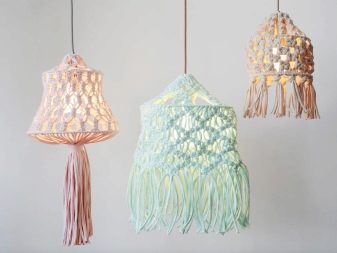
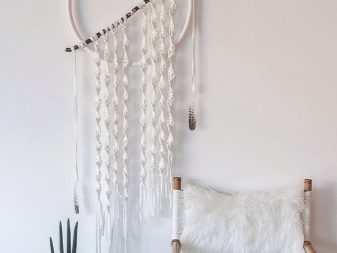
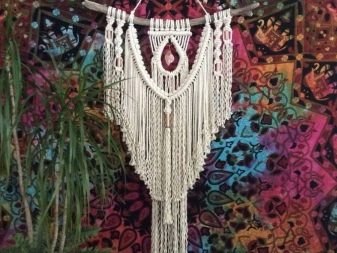
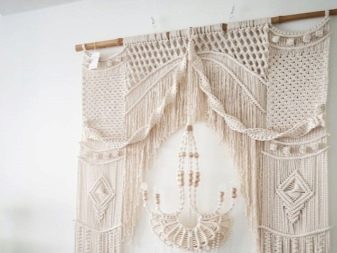
Small modest panels made with children can be used to decorate a nursery. Most likely, the child will remember such work forever and will treat this little cute part of his room with trepidation.
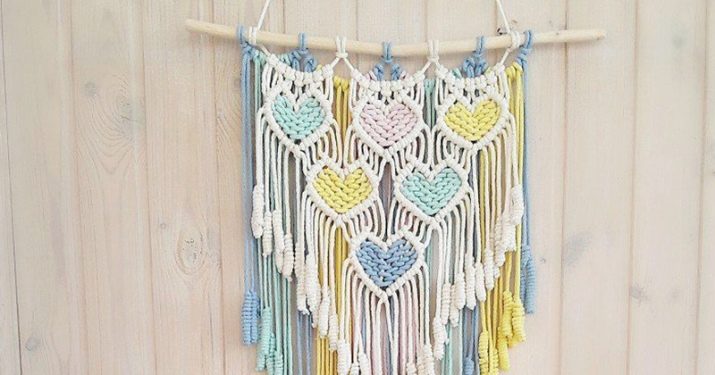
Or you can knit a cover for a sofa cushion using simple macrame harnesses. You can even make small rugs based on the macrame technique. They will look great in the bedroom and in the kitchen.

Examples of beautiful products
To be inspired, to draw beautiful but doable ideas, to dive deeper into the world of macrame, it is worth considering some interesting works in this technique.
Let's start with braids - this is one of the main elements of macrame, which not everyone knows how to do right away, on a whim.
- Common braid... It consists of three threads - the first thread on the left is thrown over the second, and now the first becomes the second, and vice versa. The third thread goes backwards to the second. Braids until the braid reaches the required length.
- French braid. There can be as many threads as you want. Of all the threads, three central ones should be distinguished, make one elements of an ordinary braid of them, then weave it, only with a new overturn of the main thread, adding a new extreme.
- "Fish tail". It can be woven from any number of threads. The essence of weaving is dividing the threads into two parts, throwing each part to the center. The two strings in the center will be constantly changing in groups.


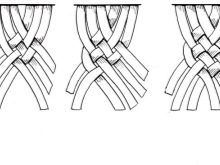
Braids in this technology are very common: if you know how to weave braids on your hair, there will be no problems with this.
And now a brief overview of interesting and simple work that, after a short training, will obey even beginners in macrame.
- Owl. The theme of owls in the weaving technique is certainly not deprived of attention. Such works are very popular with both children and adults. This owl is not the easiest one, but you can't call it complicated either. Even someone who has recently started to master macrame can weave it in a few hours. Find a thick, artistically expressive branch, take a thick braiding cord, and soon the bird of wisdom may settle in your house.
- Shelf holder... This shelf with a textile holder will look cute and cozy in any room. Please note: complex nodes are almost never used in the work, the scheme is standard. For decoration, wooden balls were taken, of which there can be as many as you like.
- Boho style panel... Such a not very large panel can decorate the wall in the bedroom or even the space of the kitchen-dining room. It will look good over the sofa in the living room too.The linen shade is preferred, although you can change it to suit the design of your home. For example, a panel made of blue threads looks great on white wallpaper.
- Dream Catcher. This is also macrame, and is also a very fashionable interior accessory today. You will need a strong workpiece circle and thick threads. The author of the catcher uses feathers as an addition to the thread base, you can also attach pieces of rough fabric, shells, wooden balls, etc. here.
- Bright panel. A great example of how gorgeous macrame looks, made with bright threads. Very simple knots, weaving goes strictly according to the pattern: unpretentious flowers in the decor and abundantly released threads. Beauty in the simple!
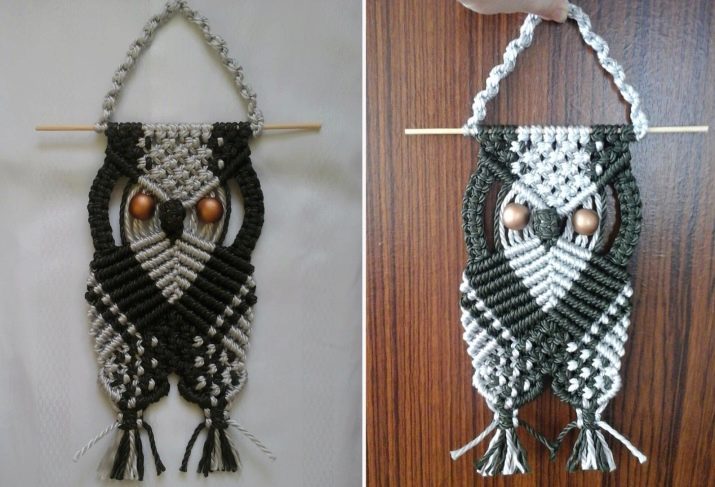
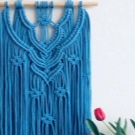
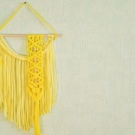
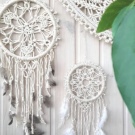
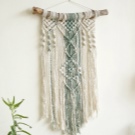
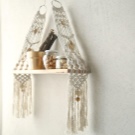
Sometimes mothers-to-be have a desire to try themselves in artistic knotting.
This is a very timely wish, because nothing is more beautiful than crocheted cradles using macrame technique. See how cool they look, how soulful and cute these baby cradles are made. And there is nothing super complicated in their manufacture.
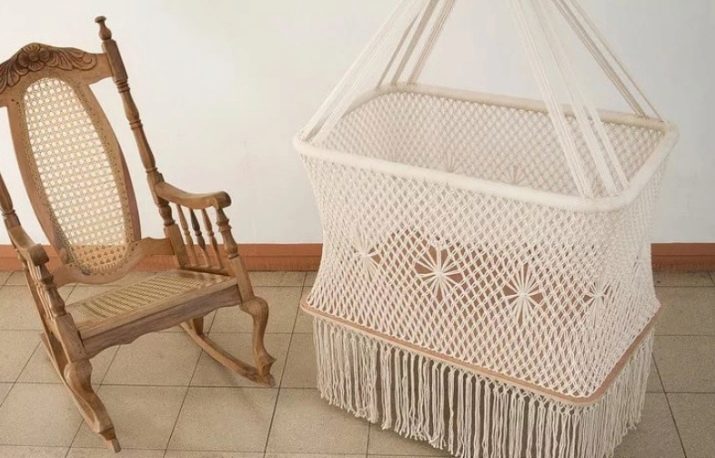
At first, lovers of macrame weave according to patterns, follow video tutorials and master classes, evaluate each knot and calculate how much is left. Then internal patterns appear, which, even without schemes, help to make symmetrical and beautiful works of authorship.
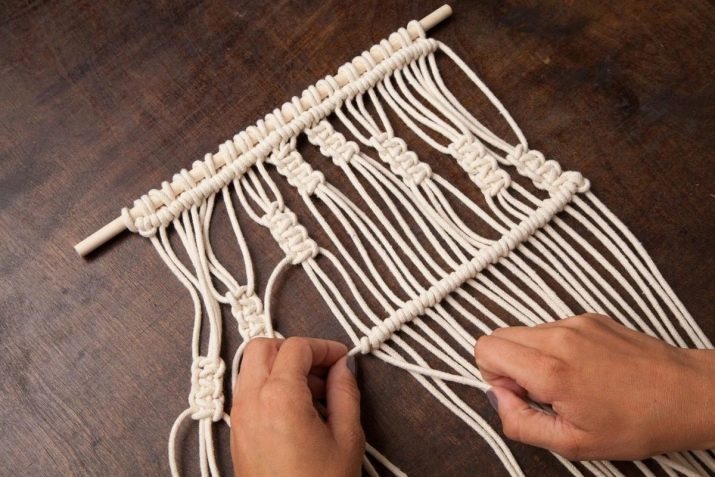
To learn how to weave a panel on a wall, see the video below.








